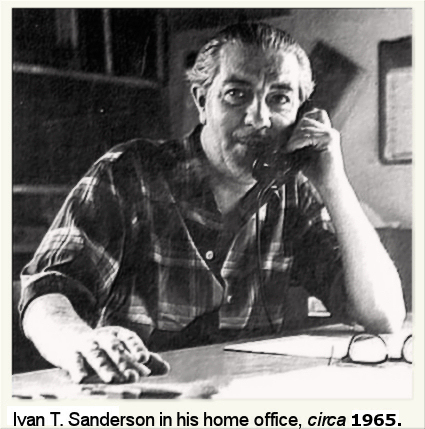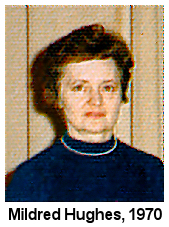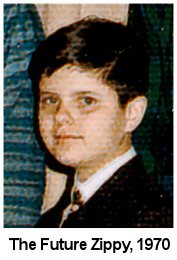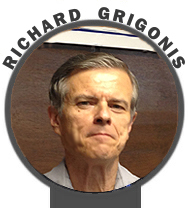A Tribute to Ivan T. Sanderson

Prologue
It is a popular belief that everyone at some point in their lives encounters a remarkable person they feel is worthy of depiction in that iconic feature, "The Most Unforgettable Character I’ve Met," in The Reader's Digest. In reality, crossing paths with such personages is an exceeding rare occurrence, on a par with winning millions in the lottery—but heaven knows there are enough people out there we'd all like to forget.
In the case of Yours Truly, however, such an encounter not only took place, it occurred rather early in life, as a youngster in the summer of 1970.
The person in question: Ivan Terence Sanderson (1911 – 1973), F.L.S., F.R.G.S., F.Z.S., M.A.(cantab). Fellow of the Linnean Society of London, Fellow of the Royal Geographical Society, Fellow of the Zoological Society of London. There's a Wikipedia entry on Sanderson, as well as a tribute by his former assistant Mark A. Hall in Wonders, December 1992, pp. 65-67 (an abbreviated version of which can be found in various places on the web, such as here). Moreover, there's an biographical entry on Sanderson in the reference work Contemporary Authors, and an excellent though slightly more error-ridden biographical entry on Sanderson that appears in the National Cyclopedia of American Biography, Vol. 57 (Clifton, NJ: J.T. White, 1977), pages 192-194, possibly written by Sanderson's widow and second wife, the former Marion L. Fawcett (born Sabina Bertshy Warren August 19, 1931), who gave Sanderson's personal papers to the American Philosophical Society in Philadelphia. Sanderson was one of the last of the great world explorers and naturalists, a World War II spy who with his wife Alma battled Nazis in the Caribbean, a best-selling author of 26 books who hosted The World is Yours (the world's first regularly-scheduled color TV series). If that weren't enough, in the 1950s he owned his own zoo along the Delaware River, and later became interested in strange phenomena for which there is as yet no scientific explanation, pretty much ruining his reputation among more skeptical scientists unable or unwilling to venture into professionally risky intellectual waters.
 How did I get to meet him? As a stereotypical, intellectually precocious child, my teachers didn't know quite what to do with me. The only one who knew exactly what to do was my eighth grade English teacher, Mildred P. Hughes, who taught at the Halstead Street School in Newton, New Jersey.
How did I get to meet him? As a stereotypical, intellectually precocious child, my teachers didn't know quite what to do with me. The only one who knew exactly what to do was my eighth grade English teacher, Mildred P. Hughes, who taught at the Halstead Street School in Newton, New Jersey.
Millie Hughes was an interesting person in her own right. When she and her husband adopted a Korean child in 1963, a children's book about the experience entitled Welcome Child (New York: John Day, 1963) was written by Pearl S. Buck (1892 – 1973), author of The Good Earth and first American woman to win the Nobel Prize for literature. Indeed, Mildred Hughes had been hired in August 1941 as the first director of Buck's East and West Association, an organization with the mission to be “an educational organization devoted to furthering mutual knowledge and understanding between the people of the United States and the people of Asia and Australasia and their allies.” (It ceased operations in 1951.) As director of the organization, Millie had known not just Buck and her husband Richard Walsh, but a board of directors that included anthropologist Ruth Benedict and Planned Parenthood founder Margaret Sanger, and an advisory board whose members included novelist Louis Bromfield, artist Miguel Covarrubias (whose vivid paintings of Central American wildlife would inspire Ivan Sanderson to write a children's book, John and Juan in the Jungle), philosophers John Dewey and Ernest Hocking, Time publisher Henry Luce, IBM's Thomas Lamont, and Juan "Terry" Trippe, chairman of Pan American Airlines.
In any case, in 1970, having gone through a brief, intense childhood phase of reading science fiction and fantasy works, I was now collecting books and articles on unexplained phenomena that seem to challenge or simply have escaped scientific examination. These anomalies and paranormal phenomena are often called "forteana" in honor of Charles Hoy Fort (August 6, 1874 – May 3, 1932) the author of four books based on his obsessive research in this area. While perusing the available mass of unusual literature, I noted that Ivan T. Sanderson, one of the few genuine scientists who took any of this stuff seriously, had popularized (and probably invented) the term "cryptozoology" to describe legendary, as-yet-undiscovered animals.
 I discussed my activities with Millie Hughes.
I discussed my activities with Millie Hughes.
“I know someone who knows all about that kind of stuff,” she said. “He even lives around here—well, actually he lives way out in the woods past Blairstown. I think he’s a little eccentric, but he's a brilliant scientist and I bet you two will hit it off. His name is Ivan Sanderson.”
“You know Ivan Sanderson?” I asked, incredulously. She did indeed did know him, and then I was given an old manuscript of an article about him that she had written for a local newspaper some six years previously. On reading it, I began to get the impression that this fellow Sanderson was a bit of Lowell Thomas, Marco Polo, and the entire staff of the British Museum all rolled into one.
I went back to the local library and searched for the numerous books and magazine articles that he had written. To my surprise, I found that much of the authoritative material on unexplained phenomena I had gathered had either been written by Ivan Sanderson, or else the authors of the articles and books would refer to him from time to time. He delved into matters that other scientists wouldn’t touch, bringing to the fore all of his scientific training in order to study them. Assisting him in his research was his nonprofit organization, Society for the Investigation of the Unexplained, or SITU, made up primarily of renegade scientists, researchers, adventurers, strange geeky characters and other interested parties who had helped him investigate and compile information on unusual creatures, artifacts and phenomena found throughout the world. Sanderson appeared to have squeezed a whole different lifetime into each decade of his life. Everyone who ever interviewed him inevitably wrote the line: "I walked into the room and began talking to the most interesting person I've ever met."
Chapter 1 — On the Trail of Ivan T. Sanderson
 Ivan T. Sanderson's SITU Headquarters was hidden away in the wilds of Warren County, New Jersey. Here's a photo from a May 1977 trip during which I was accompanied by some college buddies. (Photo by Richard Grigonis.)
Ivan T. Sanderson's SITU Headquarters was hidden away in the wilds of Warren County, New Jersey. Here's a photo from a May 1977 trip during which I was accompanied by some college buddies. (Photo by Richard Grigonis.) Yes, Ivan Sanderson actually did live on Ivan Road. The local government didn't have the money to produce a sign large enough to display the name of the Old Polkville Road (then called the Polkville Centerville Road) and so they used the conveniently short name of their most famous citizen. During his life, Ivan's address was R.D. 1, Columbia, New Jersey, as was that of SITU. Today, however, the address of the former Sanderson Estate is 33 Ivan Road. Ivan's former #1 assistant, Edgar O. ("Eddie") Schoenenberger lives there with his wife.
Yes, Ivan Sanderson actually did live on Ivan Road. The local government didn't have the money to produce a sign large enough to display the name of the Old Polkville Road (then called the Polkville Centerville Road) and so they used the conveniently short name of their most famous citizen. During his life, Ivan's address was R.D. 1, Columbia, New Jersey, as was that of SITU. Today, however, the address of the former Sanderson Estate is 33 Ivan Road. Ivan's former #1 assistant, Edgar O. ("Eddie") Schoenenberger lives there with his wife. Here are the two fellows who first guided Yours Truly and my father to Ivan Sanderson's home and SITU headquarters. "Big Rich" (Richard T. Crowe) or "Rich #2" as Ivan's wife Alma called him (to distinguish him from fellow staff member Richard T. Grybos) is standing in front of one of SITU's two 36-foot-by-10-foot city buses that were fitted out as laboratories, potting sheds, and workrooms for biological research. On the right is a more contemporary photo of Mark A. Hall. Crowe would go on to become "the Midwest's original full-time, professional Ghosthunter" and now runs Chicago Supernatural Tours. (Photo courtesy Richard T. Grybos.)
Here are the two fellows who first guided Yours Truly and my father to Ivan Sanderson's home and SITU headquarters. "Big Rich" (Richard T. Crowe) or "Rich #2" as Ivan's wife Alma called him (to distinguish him from fellow staff member Richard T. Grybos) is standing in front of one of SITU's two 36-foot-by-10-foot city buses that were fitted out as laboratories, potting sheds, and workrooms for biological research. On the right is a more contemporary photo of Mark A. Hall. Crowe would go on to become "the Midwest's original full-time, professional Ghosthunter" and now runs Chicago Supernatural Tours. (Photo courtesy Richard T. Grybos.) Rich Grybos (or "Rich #1"), a geographer, was a resident assistant at SITU headquarters from the late 1960s until 1971. With Michael R. Freedman and Ivan Sanderson, he worked on SITU's Annex building and ultimately catalogued SITU's collection of maps. Many of the photos and documents from his personal archive have been incorporated into this website.
Rich Grybos (or "Rich #1"), a geographer, was a resident assistant at SITU headquarters from the late 1960s until 1971. With Michael R. Freedman and Ivan Sanderson, he worked on SITU's Annex building and ultimately catalogued SITU's collection of maps. Many of the photos and documents from his personal archive have been incorporated into this website. The sweltering heat. The psychedelic wall. The faux zebra furniture fabric. Interviewing a famous person in his swimming trunks. Did Edward R. Murrow start out this way? (Photo courtesy Daniel F. Manning.)
The sweltering heat. The psychedelic wall. The faux zebra furniture fabric. Interviewing a famous person in his swimming trunks. Did Edward R. Murrow start out this way? (Photo courtesy Daniel F. Manning.) July 1970 Interview. (Photo courtesy Daniel F. Manning.)
July 1970 Interview. (Photo courtesy Daniel F. Manning.) July 1970 interview. (Photo courtesy Daniel F. Manning.)
July 1970 interview. (Photo courtesy Daniel F. Manning.) 1974 photo of Yours Truly visiting SITU headquarters after Ivan Sanderson's death in 1973. The little running creature chasing the question marks on each sign is a dog, by the way. It was Ivan Sanderson's "trademark" for years; he used to autograph books with it and such. It later became SITU's trademark and appeared on the cover of the early issues of SITU's journal, Pursuit. (Photo by Andy Struble.)
1974 photo of Yours Truly visiting SITU headquarters after Ivan Sanderson's death in 1973. The little running creature chasing the question marks on each sign is a dog, by the way. It was Ivan Sanderson's "trademark" for years; he used to autograph books with it and such. It later became SITU's trademark and appeared on the cover of the early issues of SITU's journal, Pursuit. (Photo by Andy Struble.) Photo (circa winter of 1976) of the "Mansion house" taken from parking lot of SITU headquarters. (Photo by Richard Grigonis.)
Photo (circa winter of 1976) of the "Mansion house" taken from parking lot of SITU headquarters. (Photo by Richard Grigonis.) SITU headquarters, circa 1976. Guess what, pyramids don't sharpen razor blades, nor do they preserve meat. The SITU annex building in the background. It contained files, the library, and a meeting room. (Photo by Richard Grigonis.)
SITU headquarters, circa 1976. Guess what, pyramids don't sharpen razor blades, nor do they preserve meat. The SITU annex building in the background. It contained files, the library, and a meeting room. (Photo by Richard Grigonis.) Spray-painted blowfish at SITU headquarters, circa 1974. (Photo by Richard Grigonis.)
Spray-painted blowfish at SITU headquarters, circa 1974. (Photo by Richard Grigonis.) Ivan's "Oriental Room" in the Mansion house was just that. Here I'm sitting on a Japanese carved chair ("made by a Japanese artisan working in Korea"), posed in front of a large, superb Chinese wall hanging, given to Ivan's mother Stella by the last emperor of China, Puyi. (Photo by Andy Struble.)
Ivan's "Oriental Room" in the Mansion house was just that. Here I'm sitting on a Japanese carved chair ("made by a Japanese artisan working in Korea"), posed in front of a large, superb Chinese wall hanging, given to Ivan's mother Stella by the last emperor of China, Puyi. (Photo by Andy Struble.) Although Ivan raised quite a few Golden Retrievers for the Seeing Eye Dog Foundation, these two were pets: Bruno (the Black Retriever with some Collie blood) and Marzi the Golden Retriever. (Photo courtesy Richard T. Grybos.)
Although Ivan raised quite a few Golden Retrievers for the Seeing Eye Dog Foundation, these two were pets: Bruno (the Black Retriever with some Collie blood) and Marzi the Golden Retriever. (Photo courtesy Richard T. Grybos.) Remnants of experimental car of one SITU member, Adoph Heuer of Columbia, New Jersey. He called it his "Batman car." Not many cars have bodies made of masonite, wood, old car parts and dual radiators. Photo taken approximately 1977. (Photo by Richard Grigonis.)
Remnants of experimental car of one SITU member, Adoph Heuer of Columbia, New Jersey. He called it his "Batman car." Not many cars have bodies made of masonite, wood, old car parts and dual radiators. Photo taken approximately 1977. (Photo by Richard Grigonis.) Hamming it up for the camera with Adolph Heuer's "Batman car," 1977. (Photo by David Palmieri.)
Hamming it up for the camera with Adolph Heuer's "Batman car," 1977. (Photo by David Palmieri.) Last photo (taken in May 1977) of SITU member Adolph Heuer's "Batman car" prior to its disassembly.
Last photo (taken in May 1977) of SITU member Adolph Heuer's "Batman car" prior to its disassembly.
I became determined to meet this Ivan Sanderson and make a tape-recording of a conversation with him, even if only for reasons of posterity. I persuaded my father to drive me into the wilds of Warren County, then I found Sanderson's home phone number and made arrangements with his wife Alma for a meeting scheduled to take place in two days. She said: “Wait at the Inn in Hainesburg. Two of our people will show you the way from there. You’d never find our home and headquarters on your own.”
She was quite correct. New Jersey may be the most densely-populated state in America, but the Delaware Water Gap area back in 1970 was more of a wilderness. Just locating the thriving metropolis of Hainesburg was an exercise in keen observation. You rode along the highway and you soon saw a sign that read: “Welcome to Hainesburg—Home of the Rubber Stamp.” You then passed a tavern-hotel ("Roth's Inn”) a delicatessen, five other buildings and then—wooosh—you were now out of Hainesburg and into the dark recesses of the New Jersey woods. When lost in that vicinity, one couldn't use a compass—they just are not accurate up there. A mineral in the surrounding mountains called magnetite is responsible for this effect.
After having a Coke served in a shot glass by the proprietor of Roth's Inn (appropriately named Mr. Roth), I used a payphone and got through to Sanderson. He told me that his wife Alma was ill and had to be taken to the hospital. The two men would still come down for us, however. Soon a car appeared and a wiry fellow got out, followed by another man who looked like a linebacker for a pro football team. They disappeared into the Inn but soon reappeared, looking inquisitively in our direction. My father and I, in turn, got out of our car and shook hands with them.
“Follow our car,” one said.
We did. We made our excursion through the forest and nearby farmland, always following the elusive car up ahead. On an uphill grade the lead car turned left. Before following, I took note of the road marker for later reference. It read: Ivan Road. Amusing. I later learned that the local government lacked the money for a sign large enough on which the name, Polkville Centerville Road could fit. The locals decided that the name Ivan was well-known and short enough. (Ivan lived at what is now 33 Ivan Road.) I discovered some three years later that the “wiry guide,” Mark A. Hall (b. 1946), had served with the U.S. Army Security Agency as a Russian linguist (with Top Secret Clearance) in West Berlin during the midst of the Cold War (he speaks several languages). Hall had traveled a great deal throughout Europe and once attended the University of Minnesota where he majored in physical anthropology. Following his military service he became an editor of the Minnesota Archeological Society, and has worked in human relations in various branches of the federal government (such as the U.S. Department of Agriculture) while in his home state of Minnesota. Like Sanderson, he became an author and publisher of a journal (Wonders, now defunct) and serveral books on "cryptids," or animals still in the realm of cryptozoology. The other, larger fellow was named Richard T. Crowe, who years later became a well-known "ghosthunter" in the Chicago area. (Ivan Sanderson himself was on record as disapproving of ghost investigations, as he thought the phenomeon was too "intangible" and therefore not amenable to genuine scientific investigation.) Mrs. Sanderson called Rich Crowe "Rich #2" because he had a friend working at SITU also named Rich. This other, "slimmer" (never to exceed 160-pounds in his life) Rich #1 was named Richard T. Grybos, who was an occasional author in the area of unexplained phenomena. Grybos, a geography expert, would soon leave SITU to become a photo analyst for the Central Intelligence Agency, then come back to SITU when Mrs. Sanderson became ill, and then finally leave for good to become an employee of the Encyclopedia Britannica organization.
Finally, coming down a stretch of road, the forest fell away to reveal an old house, concrete building, an unwheeled bus set on concrete blocks, a vestigial parking lot, and two neatly lettered metal signs that read: SITU: The Society for the Investigation of the Unexplained. A smaller sign read "Visits by Prior Appointment Only."
We all pulled into the parking area and got out of our cars. As my father was getting out the recording equipment, I headed straight toward the house where I would inquire if, perhaps, I should leave now and return when Mrs. Sanderson was feeling better. A screen door opened at my approach, and there stood a dark-haired woman about my height who fit the description of Alma Viola Sanderson (Ivan’s wife) perfectly.
The following earth-shattering dialogue then took place between us:
“You must be Mrs. Sanderson. I’m Richard Grigonis.”
“How do you do?”
“Fine, but I don’t understand. You are supposed to be going to the hospital.”
“Yes I am, as soon as the ambulance gets here.”
“But I still don’t understand. You’re on your feet and you look well.”
“I am, really, but you see this fly bit me.”
“A fly?”
“Yes, it bit me on the eye during the night.”
“Oh, that’s too bad.”
“Yes [chuckle] I must learn to sleep with my eyes closed from now on!”
I found out later that Alma had been bitten on the eye while asleep, (nothing serious) but her sense of humor had tacked on that line about learning to sleep with her eyes closed. I was now ready to believe anything, so I just said “Oh really,” and nonchalantly walked inside.
“Ivan will be with you in just a moment. In the meantime, just sit down and relax,” she said.
I was led through some connecting rooms into the “living room.” It looked more like a museum, with what were said to be Kriss knives from India hanging on one wall, sawfish “saws” on another wall, and Chinese tapestries hanging on the third. Each of these three walls had a sofa, and I sat down on one. Immediately my eye caught a funny-looking lamp sitting on a small table of its own in the far left-hand corner of the room. It was projecting multi-colored beams of light onto the wall behind it, and occasionally a beam would shine into ray face, which was a little disconcerting. Alma sat down beside me and, sounding a bit like a tour guide, proceeded to explain the origins of the various articles around the room and how they happened to fall into Ivan’s hands during his travels. Afterwards, I discovered that the whole house consisted of 11 rooms, each containing Sanderson memorabilia (except perhaps for the bathroom, the only notable feature of which was a well-displayed sign giving special instructions as to how to go about flushing the toilet “safely.”).
Just then a bunch of people walked in: My father with the tape recorder and wiring, the two guides who had led us here, and a young woman to whom I had not yet been introduced. She quickly passed by and said hello. Alma told me that her name was Marion L. Fawcett, Ivan’s “literary partner,” and librarian for his organization, SITU. She had been an editor of medical texts and had first met Ivan when he was editing books for Chilton during the period of 1960 to 1965.
After we had all chatted a while, a tall, gray-headed fellow wearing a goatee strode into the room. This distinguished-looking gentleman of impressive physique was clad in some sort of gray utilitarian garment. From photos I had seen earlier, I knew this to be Ivan Sanderson.
Ivan and I shook hands. As I stood there before him, the words of a short biographical newspaper article echoed for a moment in my thoughts: “At first glance, he is a taller edition of Rex Harrison with a voice like Graham Kerr, of the [then-popular TV show] Galloping Gourmet. Americans say his accent is British, the English call it American….”
As he gave us a preliminary greeting—the vocal inflection of which providing credence to the above quote—I saw that a conversation between us was imminent, and so I began to make a mental check of my equipment. Let me see—tape recorder, two thousand feet of magnetic recording tape, extension lines, microphone. Microphone? I FORGOT THE MICROPHONE.
I turned away from Ivan, who was still uttering witty platitudes—but now in the general direction of my father—and whispered, “I seem to have forgotten my mike. Perhaps I can write down what he says instead.”
Rich simply shook his head in disapproval just as Ivan excused himself for a moment to attend to something or other.
With that, my father and I got up, picked up the equipment and headed for the car, giving apologetic goodbyes all the way. We would be back next week.
About a week later, I would say July 6, we again attempted to find the residence of Ivan T. Sanderson. This time I made sure that I had brought along all of my equipment. As usual, I was in the back seat attempting to stabilize all of the wires, spare vacuum tubes, and boxes of recording tape, as we made our way through the New Jersey wilderness and back into the Twilight Zone. I had told Alma that we would try to make it to SITU Headquarters alone.
Through a lucky series of correct turns on the backroads, we got there—early. Not knowing what to do in such a situation, we just sat there in our car, waiting for the appointed time to roll around. Ivan’s dogs then began to bark—he raised golden retrievers for the Seeing-Eye Dog Foundation, but these two were his pets: Marzi (a Golden Retriever) and Bruno (a Black Retriever with some Collie blood) . They dogs made quite a fuss, and out paraded Ivan himself, wearing swimming trunks. He informed us that he would be busy for a few minutes, but in the meantime we could set up the recording equipment inside. While my father attended to this, I took a stroll around one of the two large ponds in back of the house that were used by the Society for biological experimentation.
A short time later I was called in for the talk. At last I rushed in to find "Big Rich" doing his laundry in the kitchen sink. I was then ushered by Alma into a room having blue walls decorated with silver swirls sprayed onto them. This discotheque effect was electrifying, and was in sharp contrast to the museum atmosphere of the living room. Ivan sat down on a sofa, facing me from across a coffee table. It was so hot that day that Ivan conducted the interview in what appeared to be his swimming trunks. Behind me was a window through which my father, society staff members, and an occasional Golden Retriever would peer in from time to time. Shelves of old photographs lined the right wall.
I made a test tape recording at 7.5 inches per second on my old Revere reel-to-reel recorder, got out my notes, and watched Ivan try to start his own miniature tape recorder, a machine that was to have made a duplicate recording of our conversation for SITU records and files. It did not work properly, and thus my tape is the only recording that exists of our conversation (aside from two cassette duplicates, one of which was mailed to radio talk show host Barry Farber in 1996 and another to cryptozoologist Loren Coleman in 2006).
Before we got underway, Daniel F. Manning, reporter, writer, and public relations man for SITU, came into the room to take three pictures of me for SITU’s files. I was “posed” on the sofa with him, holding the microphone to Ivan’s non-operational tape recorder in my hand, along with my notes. These are reproduced herein. Had there been air conditioning, I'm sure Ivan would have sported one of his more distinguished outfits, as opposed to his swimming trunks!
I had been fortunate enough to have met Sanderson at a time that later proved to be, in retrospect, altogether opportune. He had an entire lifetime of experiences behind him, which he could now leisurely reflect back upon, and my conversation with him came only a few months before the appearance of the brain tumor that led to his tragic downfall.
After Manning departed, I started recording and began a conversation that soon unfolded the events of Ivan Sanderson’s remarkable life. For those readers who know Sanderson only in terms of his more unusual cryptozoological writings, this material describes, to paraphrase the title of one of his books, the "Ivan Sanderson that Nobody Knows."
Home — Next: Chapter 2: Birth, Parents, and Education — Top of Page

